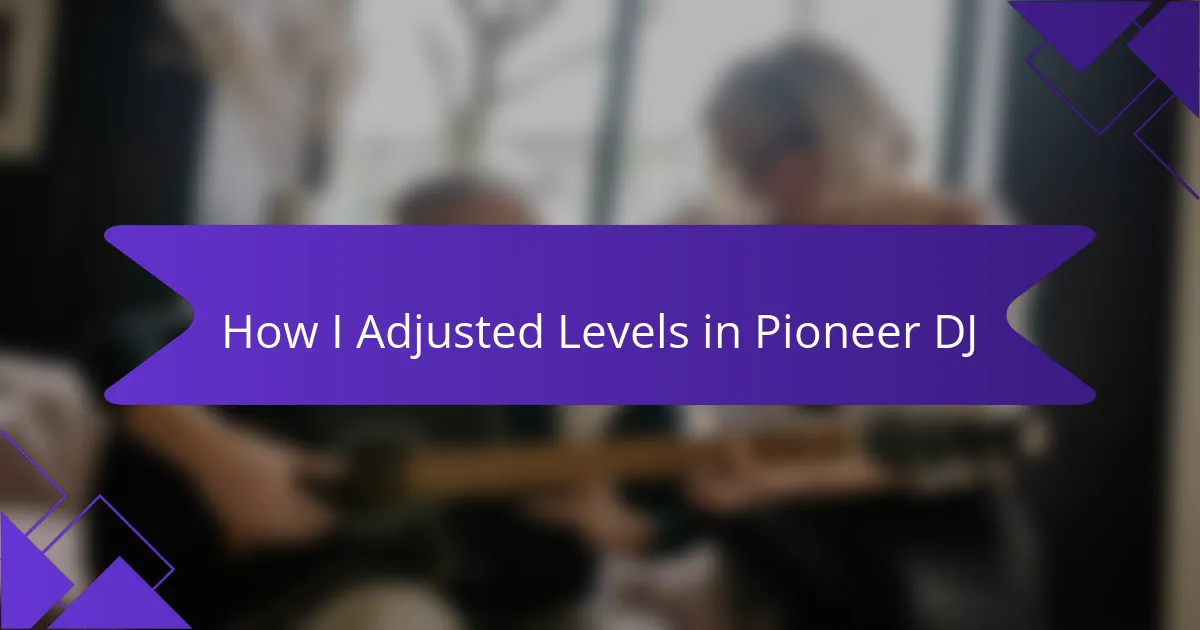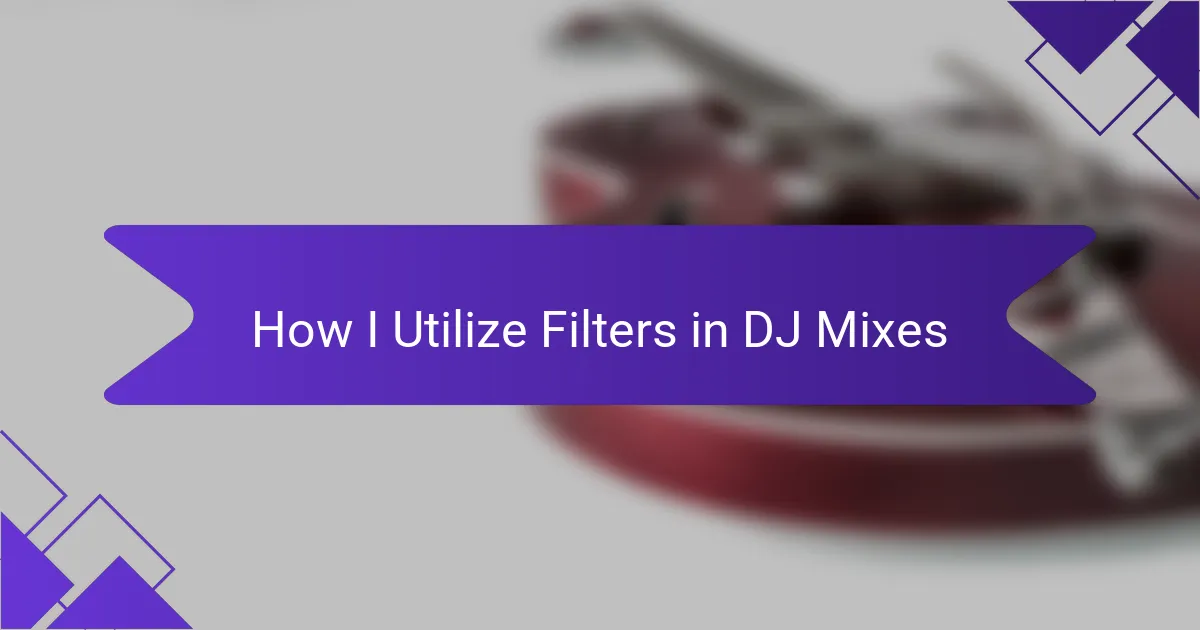Key takeaways
- Track layering enhances musical depth, requiring attention to frequency balance and dynamics for cohesive sounds.
- DJ performances benefit from layering, which engages audiences and allows for creative expression through innovative combinations.
- Understanding both Session and Arrangement Views in Ableton Live is crucial for effective track layering and performance setup.
- Experimenting with genre blending can yield unique sounds, emphasizing emotional connections to create captivating musical experiences.

Overview of Track Layering
Track layering in music production is an art that allows you to create rich and dynamic compositions. When I first started with Ableton Live, I was amazed at how combining different tracks could transform a simple melody into a powerful sound experience. The thrill of experimenting with layers—like a lush pad beneath a driving bassline—made me fall in love with creating music all over again.
One of the key elements of effective track layering is understanding the frequency spectrum. This means ensuring that each layer occupies its own sonic space to avoid muddiness. I learned this the hard way; early on, I laid too many sounds in the same range and ended up with a chaotic mess instead of a cohesive track.
- Balance the frequencies by considering low, mid, and high ranges
- Use complementary sounds that enhance each other
- Experiment with panning to create a sense of space
- Pay attention to dynamics, adjusting volume levels to avoid conflicts
- Don’t be afraid to try unconventional combinations that could spark new ideas
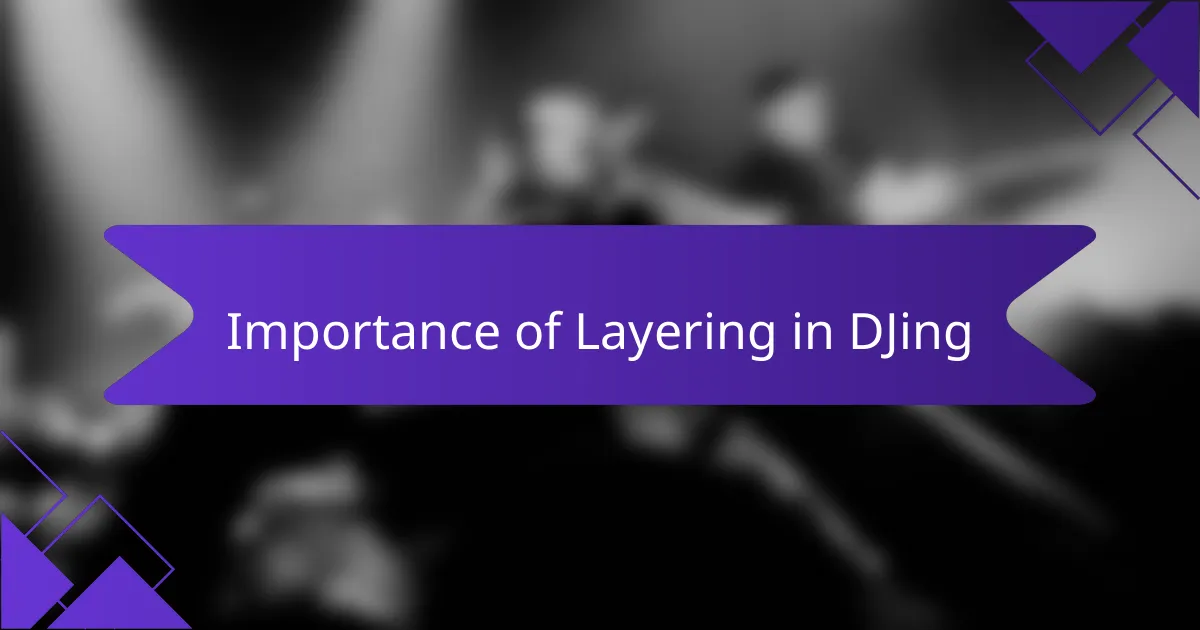
Importance of Layering in DJing
Layering in DJing is an essential technique that can truly elevate a performance. I remember the first time I layered different tracks in Ableton Live; the transformation in my set was incredible. It allowed me to create depth and richness in my sound, making the experience more engaging for my audience.
When I layer tracks, I’m not just stacking sounds; I’m weaving a story that resonates with the dance floor. This approach can lead to unexpected harmonies and variations that keep the energy high and the crowd moving. It’s not just about mixing; it’s about crafting a sonic journey.
Here’s a quick look at some key aspects of layering in DJing:
| Aspect | Importance |
|---|---|
| Sound Quality | Layering enhances richness, preventing a flat sound. |
| Audience Engagement | A layered mix keeps listeners intrigued and active on the dance floor. |
| Creative Expression | Combining different elements allows for personal style and innovative sets. |
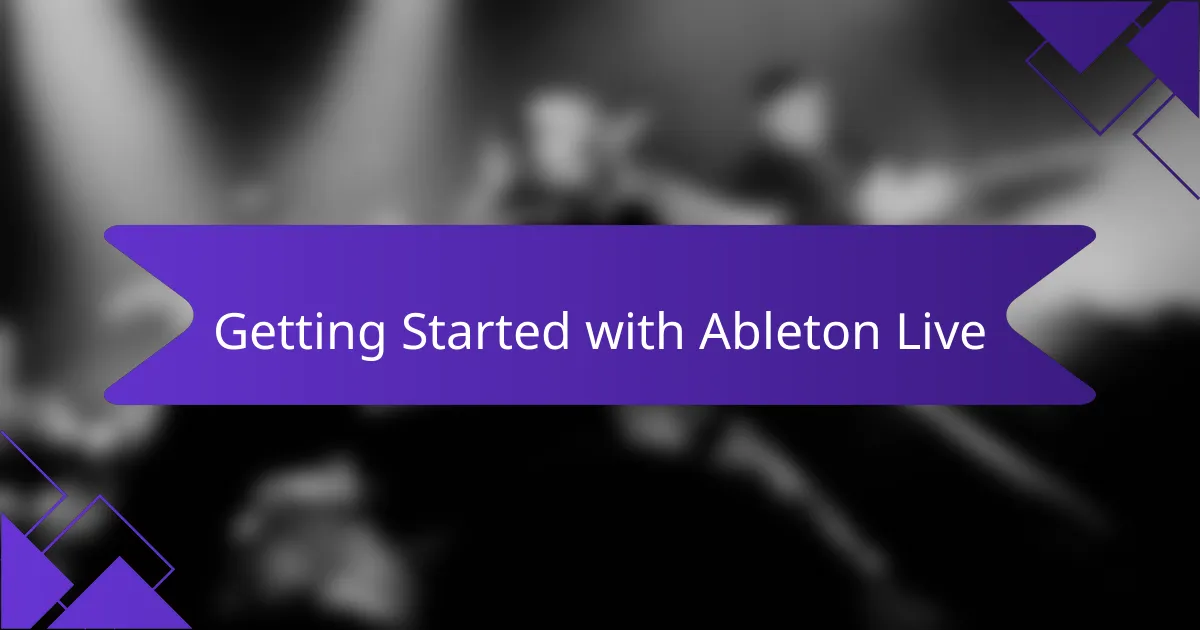
Getting Started with Ableton Live
Getting familiar with Ableton Live can feel like an exciting challenge. When I first dove into the software, I loved how intuitive it felt, especially for layering tracks. The interface is user-friendly, which meant I could focus less on the technicalities and more on my creativity. This made my initial explorations more enjoyable and less daunting.
One key fact that stood out to me was the importance of understanding both the Session View and Arrangement View. I remember playing around with the Session View, which is great for live performances, while the Arrangement View helped me organize and refine my tracks. Finding that balance is crucial for any DJ looking to layer tracks effectively.
Here’s a comparison of the two views to help illustrate their differences:
| Feature | Session View | Arrangement View |
|---|---|---|
| Best For | Live performance and improvisation | Track arrangement and editing |
| Workflow | Clip-based, flexible | Linear, structured |
| Visualization | Grid layout | Timeline layout |
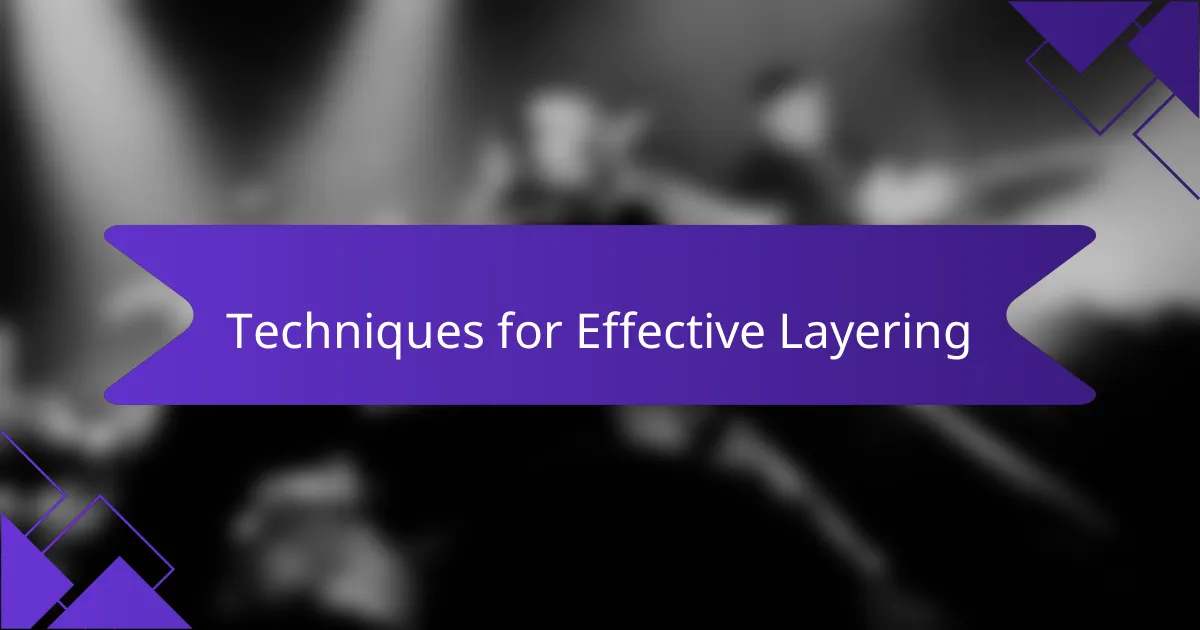
Techniques for Effective Layering
When it comes to layering tracks in Ableton Live, one technique I often rely on is using complementary frequencies. I’ve found that mixing different instruments that occupy distinct frequency ranges can create a fuller sound. For instance, pairing a deep bass line with airy synths adds depth, making the overall mix richer and more engaging.
Another effective method is to use automation to add dynamics to the layers. During a live set, I’ve noticed how automating volume or filter cutoffs can make certain elements stand out at just the right moment. This not only keeps the audience captivated but also allows for a natural build-up and release of energy throughout the performance.
Lastly, I always experiment with effects like reverb and delay. I remember one night where I layered a vocal track with a subtle delay effect, which surprisingly added an ethereal quality that resonated with the crowd. It’s these little touches that can make a big impact in a layered mix.
| Technique | Description |
|---|---|
| Complementary Frequencies | Mix instruments that occupy different frequency ranges for a fuller sound. |
| Automation | Use volume or filter automation to create dynamics and interest in your mix. |
| Effects | Incorporate reverb and delay to add depth and character to your layers. |
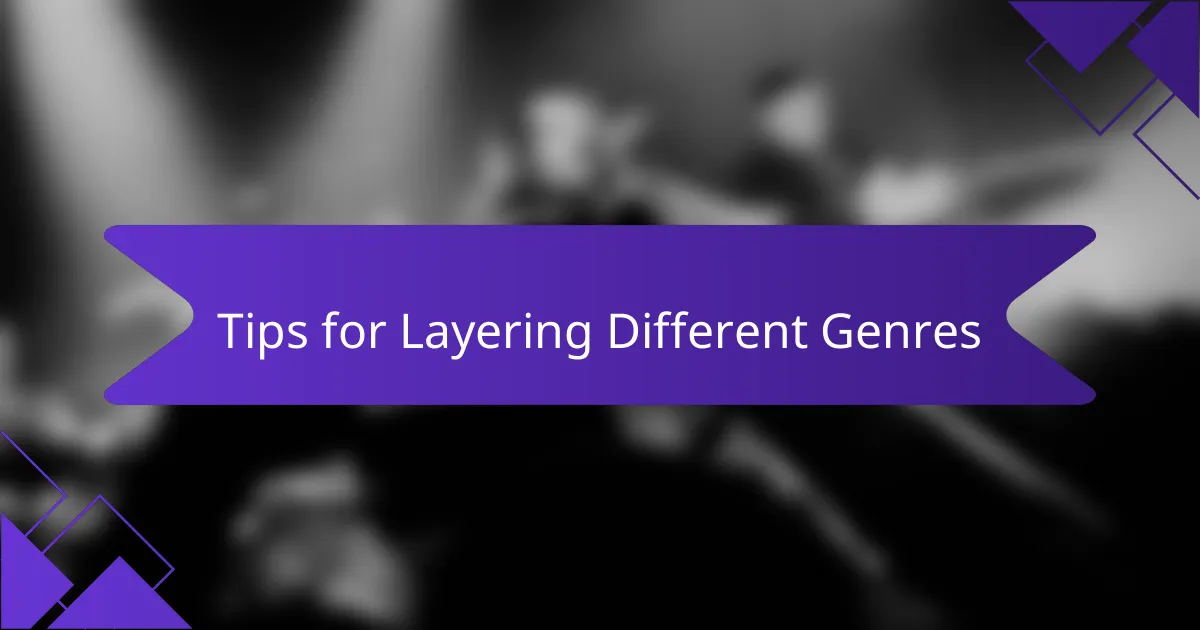
Tips for Layering Different Genres
When layering different genres, I often find that the key is in understanding their unique characteristics. For instance, blending a rhythmic hip-hop beat with ambient textures can create an intriguing contrast. Remember that it’s all about finding that sweet spot where each genre complements rather than competes with the others. I still vividly recall a session where I paired a classic jazz sample with a modern electronic bassline; the result was surprising and delightful.
A valuable tip is to focus on the emotional connection of each genre. I’ve learned that a soulful vocal track layered over a driving techno beat can evoke deep feelings on the dance floor. When I attempt to layer two very different genres, I ask myself: “What emotions does each genre convey, and how can they enhance each other?” This inquiry often leads to unexpected combinations and keeps my sets fresh and exciting.
Don’t shy away from experimenting! I remember the first time I merged a reggae rhythm with house elements; it felt like a leap of faith. But that bold mix paid off, creating a groove that was infectious. The lesson here is clear: trust your instincts and be open to steering away from conventional paths. You might just uncover a fusion that resonates profoundly with your audience.
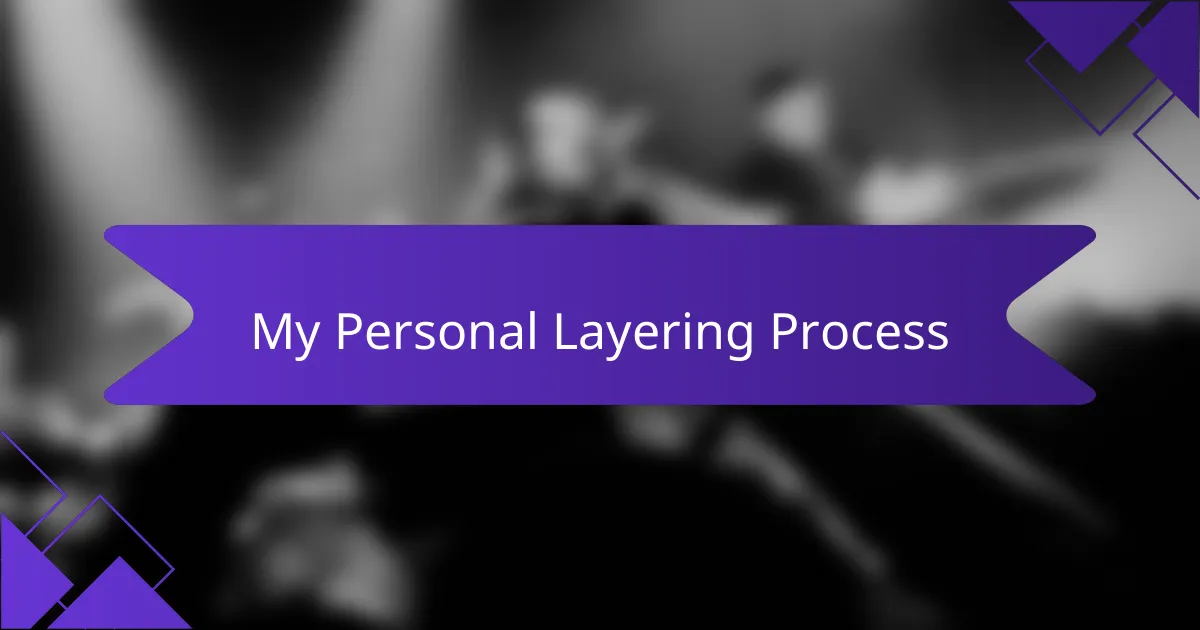
My Personal Layering Process
When I’m layering tracks in Ableton Live, I often start by placing my foundational elements first, such as the kick and bass. This process feels like building a house, where the bass line acts as the sturdy foundation while the kick provides the heartbeat. Once I have those locked in, I let my creative instincts take over, adding melodic elements and harmonies that resonate with my emotions.
Sometimes, I visually map out the arrangement in my mind, which helps me see the big picture. I recall a night where I layered different synth sounds—each carefully chosen to evoke a specific feeling. The moment those sounds came together was pure magic, creating a lush environment that felt alive.
Using a color-coding system for different elements keeps everything organized and also helps me quickly identify which layers I need to adjust or enhance. This simple technique has not only streamlined my process but also allows me to focus more on the artistic side of layering.
| Layering Element | Purpose |
|---|---|
| Kick | Provides foundational rhythm |
| Bass | Forms the harmonic base |
| Melodic Elements | Adds texture and emotion |
| Harmonies | Creates depth and complexity |

